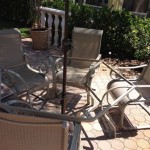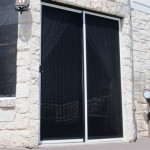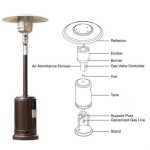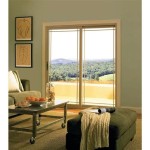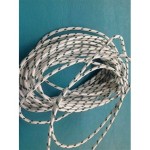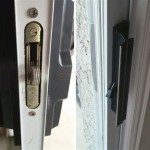Privacy Screens for Small Patios: Maximizing Comfort and Seclusion
Small patios offer valuable outdoor space, particularly in urban environments or smaller properties. However, their limited size often comes with a lack of privacy, exposing occupants to neighbors, street traffic, and unwanted views. Employing privacy screens can significantly enhance the usability and enjoyment of these spaces, transforming them into secluded retreats. This article explores the various types of privacy screens suitable for small patios, considering factors such as materials, aesthetics, installation, and cost-effectiveness.
Privacy screens serve multiple purposes beyond simply blocking views. They can act as windbreaks, reducing the impact of gusts and creating a more comfortable outdoor environment. They can also provide shade, mitigating the effects of direct sunlight and lowering the surface temperature of the patio. Furthermore, well-chosen privacy screens can enhance the aesthetic appeal of the patio, complementing the overall design of the property and creating a more inviting atmosphere.
Choosing the Right Material for Your Privacy Screen
The selection of materials for a privacy screen is a crucial decision that impacts its durability, appearance, and cost. Several options are available, each with its own set of advantages and disadvantages.
Wood remains a popular choice due to its natural aesthetic and versatility. Wood screens can be crafted from various types of lumber, including cedar, redwood, and pressure-treated pine. Cedar and redwood are naturally resistant to decay and insects, making them ideal for outdoor use, although they typically come at a higher price point. Pressure-treated pine is a more affordable option but requires regular maintenance to prevent rot and insect infestation. Wood screens can be designed in a variety of styles, from simple lattice panels to more elaborate slatted or woven designs. The level of privacy can be adjusted by altering the spacing between the wood slats or panels.
Metal offers durability and low maintenance. Aluminum and steel are common choices, often powder-coated for added protection against the elements and to provide a wider range of color options. Metal screens can be designed with intricate laser-cut patterns or simple geometric shapes. They can also be incorporated into freestanding frames or attached to existing structures. The degree of privacy offered by metal screens depends on the size and density of the openings in the design. Metal screens are generally more expensive than wood screens, but their longevity and low maintenance requirements can make them a worthwhile investment.
Composite Materials provide a blend of durability and low maintenance, mimicking the appearance of wood without the susceptibility to rot, insect damage, or warping. These materials are typically made from a combination of wood fibers and recycled plastics. Composite screens are available in a variety of colors and finishes and require minimal upkeep, typically only needing occasional cleaning. While composite screens can be more expensive than pressure-treated wood, they offer a longer lifespan and require less maintenance, making them a cost-effective option in the long run.
Fabric offers a lightweight and versatile option for creating privacy. Outdoor-rated fabrics, such as canvas or mesh, can be draped over frames or hung from existing structures to create a temporary or semi-permanent privacy screen. Fabric screens are relatively inexpensive and easy to install, making them a good choice for renters or those seeking a budget-friendly solution. However, fabric screens are less durable than other options and may require replacement more frequently. They are also more susceptible to wind damage and may not provide as much visual privacy as solid materials.
Living Screens utilize plants to create a natural and aesthetically pleasing privacy barrier. Climbing plants, such as ivy, clematis, or jasmine, can be trained to grow on trellises or wire supports, creating a dense green wall. Alternatively, potted plants or shrubs can be arranged to form a visual barrier. Living screens offer numerous benefits, including improved air quality, reduced noise pollution, and a more natural and inviting atmosphere. However, they require regular maintenance, including watering, fertilizing, and pruning. The level of privacy offered by a living screen depends on the density and maturity of the plants.
Design Considerations for Small Patio Privacy Screens
Beyond material selection, the design of a privacy screen is crucial for maximizing its effectiveness and enhancing the overall aesthetics of the patio. Several factors should be considered when designing a privacy screen for a small patio.
Height is a primary consideration. The height of the screen should be sufficient to block unwanted views while still allowing for adequate sunlight and airflow. A screen that is too tall can make the patio feel enclosed and claustrophobic, while a screen that is too short may not provide adequate privacy. Carefully assess the sightlines from neighboring properties and the street to determine the optimal height for your privacy screen. Generally, screens ranging from 6 to 8 feet in height are sufficient for most small patio applications.
Density refers to the level of opacity of the screen. A solid screen provides maximum privacy but can also block airflow and sunlight. A more open design, such as a slatted screen or a trellis with climbing plants, allows for better ventilation and light penetration while still providing a degree of privacy. The density of the screen should be chosen based on the desired level of privacy and the specific needs of the patio environment. For example, a patio located in a windy area may benefit from a denser screen to act as a windbreak.
Style should complement the overall design of the property and the surrounding landscape. A modern patio may benefit from a sleek metal screen with geometric patterns, while a more traditional patio may be better suited to a wooden screen with a classic design. Consider the color, texture, and overall aesthetic of the existing structures and landscaping when choosing the style of your privacy screen. A well-designed screen should blend seamlessly with the surrounding environment, enhancing the overall appeal of the patio.
Freestanding vs. Attached. Privacy screens can be designed as freestanding structures or attached to existing walls or fences. Freestanding screens offer greater flexibility in terms of placement and can be easily moved if needed. They typically consist of panels supported by posts or frames. Attached screens are more permanent and can provide a more integrated look. They are typically attached to existing structures using brackets or hardware. The choice between freestanding and attached screens depends on the specific needs of the patio and the existing infrastructure.
Installation and Maintenance of Privacy Screens
Proper installation is essential for ensuring the stability and longevity of your privacy screen. The installation process will vary depending on the type of screen and the materials used.
DIY Installation is possible for some types of privacy screens, particularly those made from wood or fabric. However, it is important to have the necessary skills and tools to ensure a safe and secure installation. Wood screens typically require digging post holes, setting posts in concrete, and attaching the screen panels to the posts. Fabric screens can be installed using simple hooks or brackets. Always follow the manufacturer's instructions when installing a privacy screen.
Professional Installation is recommended for more complex or heavy privacy screens, such as those made from metal or composite materials. Professional installers have the experience and expertise to ensure that the screen is properly installed and securely fastened. They can also handle any unexpected challenges that may arise during the installation process. While professional installation may be more expensive than DIY installation, it can save time and effort and ensure a high-quality result.
Maintenance requirements vary depending on the material of the screen. Wood screens require regular staining or sealing to protect them from the elements and prevent rot and insect infestation. Metal screens may require occasional cleaning to remove dirt and debris. Composite screens are typically low-maintenance and only require occasional cleaning. Living screens require regular watering, fertilizing, and pruning to maintain their health and appearance. Regularly inspect your privacy screen for any signs of damage or wear and tear and make repairs as needed.
By carefully considering the material, design, and installation of your privacy screen, you can transform your small patio into a secluded and inviting outdoor space.

Modern Wood Slatted Outdoor Privacy Screen Details On How To Build

Modern Wood Slatted Outdoor Privacy Screen Details On How To Build

Pexfix 76 In X 47 2 Patio Decor Privacy Screen Fence Panels Cy S079 The Home Depot

Outdoor Privacy Solutions For The Modern Home Decoist

Outdoor Privacy Screens Yard Garden Gallery

30 Clever And Pretty Outdoor Privacy Screens

Yardistry 5 X Wood Privacy Screen Ym11703 The Home Depot

These Ideas For Outdoor Screens Prove Privacy Can Be Beautiful

8 Outdoor Privacy Screen Ideas For Decks Rollerup

11 Backyard Privacy Ideas Extra Space Storage


